LED bulbs

LED bulbs are a major parameter in reconstruction, planning or building a new lights. The world's leading LED manufacturers develop their LED products primarily in line with the increasingly strict terms of energy efficiency. The strongest common factors are mainly electric saving and a lot of respect for the environment. This is reflected especially in the life of LED bulbs, which is up to 50% times longer than an incandescent tungsten light bulbs.
The construction of the LED bulb is similar to that of saving, thus the body of the bulb is rectifying the AC/DC power supply, that supplies power to the series-connected chips. Replace ordinary light bulb energy-saving LED bulbs. LED bulbs have the same threads as a base incandescent bulbs and therefore replacement is very simple. A wide range of manufacturers offer a truly rich selection of all possible parameters, allowing the float really specific requirements for specific cases. The first deciding factor in most cases the thread or socket.
-
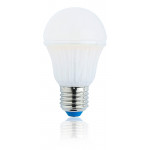
TESLA LED CRYSTAL BULB 4W White Label E27
LED bulbExcl. Tax: €9.52 Incl. Tax: €12in stockLight: Warm whiteLuminous flux: 450Replacement: 40 W -
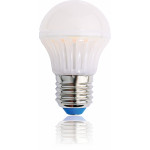
TESLA LED CRYSTAL MiniGLOBE 2,5W White Label E27
LED bulbExcl. Tax: €6.01 Incl. Tax: €7.27in stockLight: Warm whiteLuminous flux: 300Replacement: 30 W -
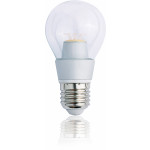
TESLA LED BULB 5W E27
LED bulbExcl. Tax: €4.10 Incl. Tax: €4.96on the wayLight: Warm whiteLuminous flux: 400Replacement: 36 W -
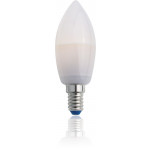
TESLA LED CRYSTAL CANDLE 3,5W 4000K White Label E14
LED bulbExcl. Tax: €6.01 Incl. Tax: €7.27in stock at the supplierLight: Cool whiteLuminous flux: 350Replacement: 30 W -
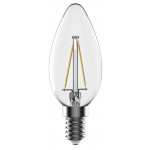
Tesla CL142227-1 LED Filament Candle 2,2W 2700K 360° E14
LED bulb clearExcl. Tax: €4.74 Incl. Tax: €5.74on requestLight: Warm whiteLuminous flux: 220 -
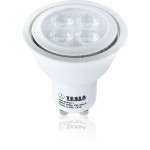
Tesla - GU100530-1 LED Bulb GU10, 5W, 3000K, Eco label
LED bulb frostedExcl. Tax: €4.74 Incl. Tax: €5.74in stock at the supplierLight: Warm whiteLuminous flux: 345Replacement: 30 W -
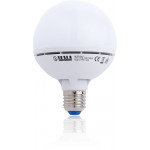
Tesla - GL271430-1 LED GLOBE E27 14W, 3000K
LED bulb frostedExcl. Tax: €13 Incl. Tax: €15in stock at the supplierLight: Warm whiteLuminous flux: 1300Replacement: 75 W -
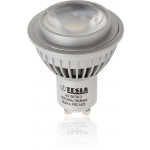
Tesla - GU100730-2 LED Bulb GU10, 7W, 3000K
LED bulb frostedExcl. Tax: €5.69 Incl. Tax: €6.881-2 weeksLight: Warm whiteLuminous flux: 450Replacement: 40 W -
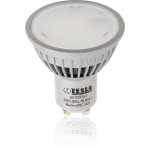
Tesla - GU100730-3 LED Bulb GU10, 7W, 3000K
LED bulb frostedExcl. Tax: €6.33 Incl. Tax: €7.66in stock at the supplierLight: Warm whiteLuminous flux: 500Replacement: 40 W -
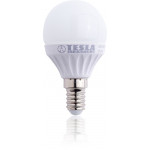
Tesla - MG140330-1 LED mini BULB, E14, 3W, 3000K
LED bulb frostedExcl. Tax: €3.46 Incl. Tax: €4.19in stock at the supplierLight: Warm whiteLuminous flux: 250Replacement: 20 W -
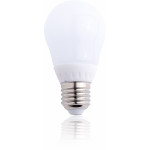
Tesla - BL270430-4 LED BULB, E27, 4W, 3000K
LED bulb frostedExcl. Tax: €3.15 Incl. Tax: €3.81in stock at the supplierLight: Warm whiteLuminous flux: 340Replacement: 30 W -
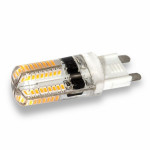
Tesla - G9000330-4S LED Bulb G9, 3W, 3000K
LED bulbExcl. Tax: €6.33 Incl. Tax: €7.66in stock at the supplierLight: Warm whiteLuminous flux: 200Replacement: 20 W -
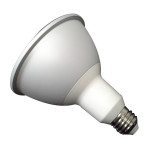
Tesla - PA381660-1 LED PAR38 E27 16W 6000K
LED bulb clearExcl. Tax: €14 Incl. Tax: €17in stock at the supplierLight: Cool whiteLuminous flux: 1300Replacement: 75 W -
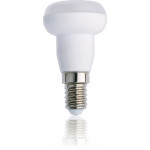
TESLA - R3143630-1 LED R39 E14 3,6W 3000K
LED bulb frostedExcl. Tax: €4.74 Incl. Tax: €5.74in stock at the supplierLight: Warm whiteLuminous flux: 250Replacement: 20 W -
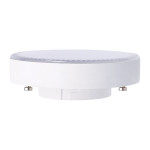
Tesla - GX530630 LED Bulb GX53, 6W, 3000K
LED bulbExcl. Tax: €6.33 Incl. Tax: €7.66in stock at the supplierLight: Warm whiteLuminous flux: 480Replacement: 40 W -
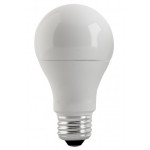
Tesla - BL270940-4 LED Bulb 9W 4000K Eco Label E27
LED bulb frostedExcl. Tax: €4.10 Incl. Tax: €4.96in stock at the supplierLight: Cool whiteLuminous flux: 806Replacement: 60 W -
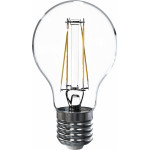
Tesla - BL276527-3 LED Crystal Retro Bulb E27, 6,5W, 2700K, 360°
LED bulb clearExcl. Tax: €7.91 Incl. Tax: €9.57in stock at the supplierLight: Warm whiteLuminous flux: 835Replacement: 60 W -
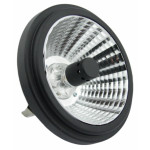
Tesla - AR111427-1 LED žárovka G53, 14W, 12V, 2700K
LED bulb clearExcl. Tax: €37 Incl. Tax: €45in stock at the supplierLight: Warm whiteLuminous flux: 700Replacement: 60 W -
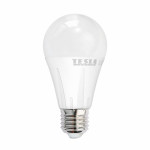
Tesla - BL271227-5 LED Bulb, E27, 12W, 2700K, Eco Label
LED bulb frostedExcl. Tax: €6.33 Incl. Tax: €7.66in stock at the supplierLight: Warm whiteLuminous flux: 1055Replacement: 75 W -
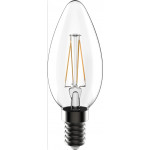
Tesla - CL143227-1 Crystal Retro 3,2W 2700K 360° E14
LED bulb clearExcl. Tax: €6.01 Incl. Tax: €7.27in stock at the supplierLight: Warm whiteLuminous flux: 360Replacement: 30 W -
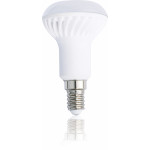
Tesla - R5144527-1 Reflektor E14 4.5W 350lm 90° 2700K
LED bulb frostedExcl. Tax: €5.37 Incl. Tax: €6.50in stock at the supplierLight: Warm whiteLuminous flux: 350Replacement: 30 W -
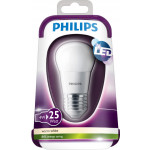
Philips LEDbulb 4-25W E27 WW P45 Fr
LED bulb frostedExcl. Tax: €4.71 Incl. Tax: €5.70in stock at the supplierLight: Warm whiteLuminous flux: 250Replacement: 20 W -
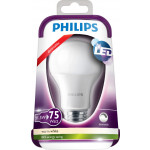
Philips LEDbulb 11.5-75W E27 WW A60 FR D
LED bulb frostedExcl. Tax: €11 Incl. Tax: €14on requestLight: Warm whiteLuminous flux: 1055Replacement: 75 W -
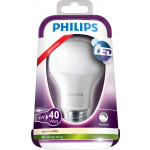
Philips LEDbulb 6-40W E27 WW A60 FR D
LED bulb frostedExcl. Tax: €7.48 Incl. Tax: €9.05on requestLight: Warm whiteLuminous flux: 470Replacement: 40 W -
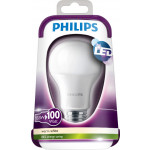
Philips LEDbulb 13.5-100W E27 WW A60 FR
LED bulb frostedExcl. Tax: €14 Incl. Tax: €17in stock at the supplierLight: Warm whiteLuminous flux: 1521Replacement: 100 W
LED bulbs E27

Large Edison thread E27 is one of the most used standardized threading around the world, and therefore with him to this day can be found in most various chandeliers, lamps and other lighting fixtures. LED bulbs threaded E27 are often designed in the classic appearance of tungsten bulbs, allowing direct exchange of the new technology without sacrificing the look of the entire luminaire. Thread E27 bears its label since 1881, when Thomas Alva Edison equipted this bulb. Therefore, it indicates a large E, followed by the numeral thread diameter in millimeters. This is called a thread fillet (no sharp edges) since the profile is composed of circular arcs.
The main advantages of LED light sources are primarily energy-saving, moving around a 90 % reduction in electrical power consumption while maintaining the same, if not greater space and lighting compared to incandescent bulbs last much longer, which means the absence of frequent exchanges of resources. Finally, the advantage of emitting type light that does not emit or IR (infrared) or UV (ultraviolet) rays, which implies that amortise lights illuminate the object and does not attract flying insects. A major advantage is much greater mechanical resistance, as banks are made of plastic, not glass.
LED bulbs E14

Small thread Edison is one of the most used standardized threading around the world, and therefore with him to this day can be found in most various chandeliers, lamps and other lighting fixtures. LED bulbs threaded E14 are often designed in the classic appearance of tungsten bulbs, allowing direct exchange of the new technology without sacrificing the look of the entire luminaire.
Thread E14 bears its label since 1881, when Thomas Alva Edison equipted this bulb. Therefore, it indicates a large E, followed by the numeral thread diameter in millimeters. This is called a thread fillet (no sharp edges) since the profile is composed of circular arcs.
The main advantages of LED light sources are primarily energy-saving, moving around a 90 % reduction in electrical power consumption while maintaining the same, if not greater space and lighting compared to incandescent bulbs last much longer, which means the absence of frequent exchanges of resources. Finally, the advantage of emitting type light that does not emit or IR (infrared) or UV (ultraviolet) rays, which implies that amortise lights illuminate the object and does not attract flying insects. A major advantage is much greater mechanical resistance, as banks are made of plastic, not glass.
LED bulbs GU10

Bipin/Bi-pin the IEC (International Electrotechnical Commission) standardized, the most common base for small, especially halogen bulbs in most modern lighting and both recessed and suspended, or otherwise structurally solved, using input 230V AC. GU10 has two diameters split pin right angle because of the twist-lock (insert and rotate) for easier installation in luminaires.
LED bulbs in sockets GU10 are therefore a direct replacement halogen bulbs and other spot bulb. Due to structures with a small opening angle and high brightness in it are illuminated places and points lightened the same or more than the classic halogen bulbs for a fraction of the electricity. GU socket connectors are usually made of ceramic because of better insulation and cooling.
LED bulbs GU5.3

Bipin/Bi-pin the IEC (International Electrotechnical Commission) standardized, the most common base for small, especially halogen bulbs in most modern lighting and both recessed and suspended, or otherwise structurally solved, using input 12V DC current. Small pitch pins at GU5.3 lamps prevents the use of high-current (DC 230V) and power, so the installation is done on AC 12V systems (mostly solved transformers).
LED bulbs in sockets GU5.3 are therefore a direct replacement halogen bulbs and other spot bulb. Due to structures with a small opening angle and high brightness in it are illuminated places and points lightened the same or more than the classic halogen bulbs for a fraction of the electricity. GU socket connectors are usually made of ceramic because of better insulation and cooling.
LED bulbs GU4/G4

G4/GU4 is a small slot so-called "capsule" used in AC 12V lighting systems. Most often finds use in decorative lights, table lights and furniture industry (lighting cabinets, etc), but also as caravans and motor homes where the power source battery only, do not consume nearly as much electricity as the original G4 halogens.
LED bulbs G9

The bulb with base G9 is a small size due to reduced building height of the luminaire. G9 is less widespread type and are powered 230V, there is no need power supply. LED bulbs with base G9 saves up to 90% of operating costs compared to incandescent bulbs. LED bulb with G9 socket is suitable for spotlights, chandeliers and lamps. Especially suitable for living rooms, bedrooms, kitchens, but also to commercial space.
LED bulbs G24

The bulbs with socket G24 are frequently used light sources, which are intended exclusively for lighting of commercial areas for the recessed luminaires. LED bulbs G24 significantly reduce operating costs and 2-3 longer lifetime compare to conventional light sources. Replacing standard light source for LED bulb G24 is the best choice when having to replace compact fluorescent PL-C type.
LED bulbs G53

G53 is a great base for professional special light source, usually meeting the strictest criteria. Due to its high light output and very sharply bounded scattering of the beam are LED lamps with G53 base most often used in harsh conditions such as medicine, food, hospitality, and various control and research institutions. Excellent use but i find the workshop workbench during the manufacturing operations such as drilling, grinding, cutting or painting, in short, all workshop activities.













